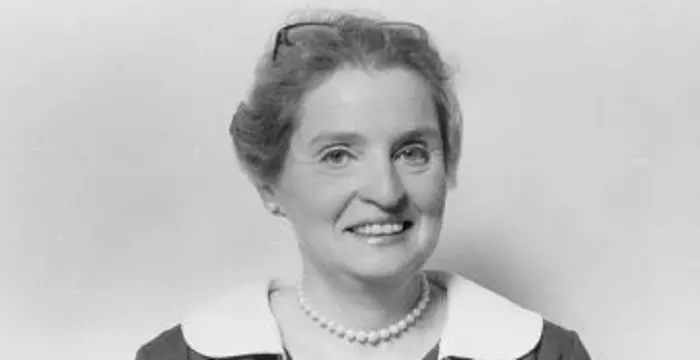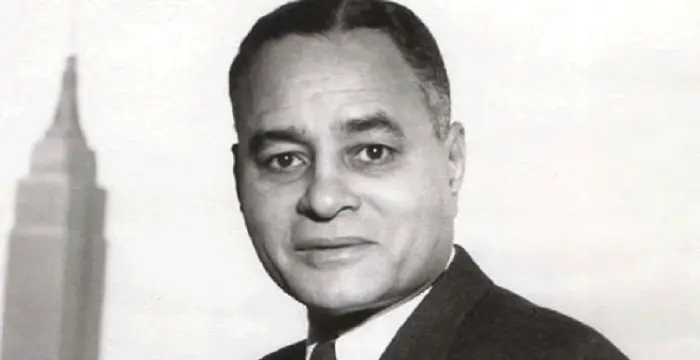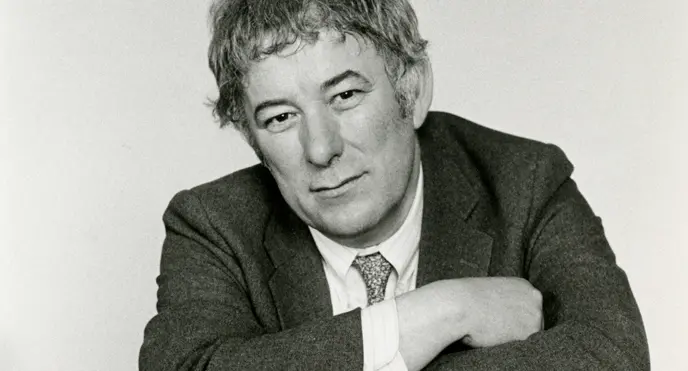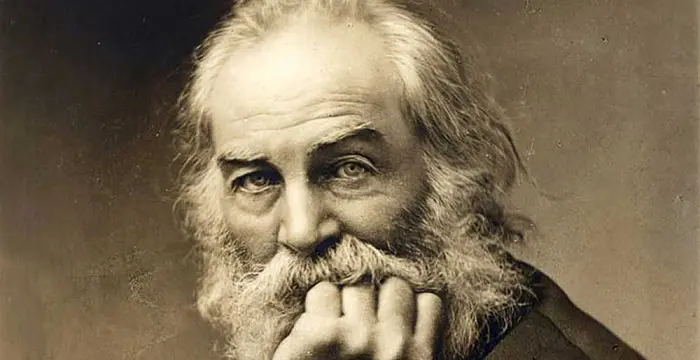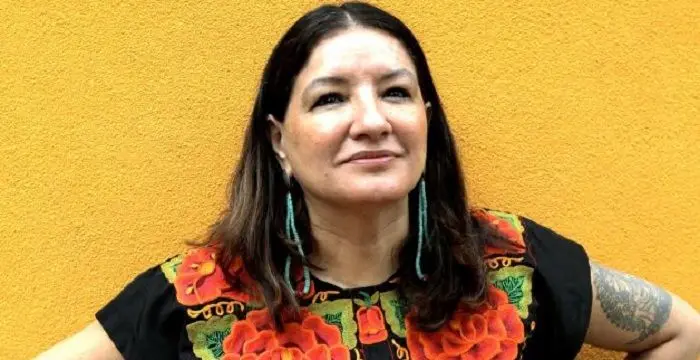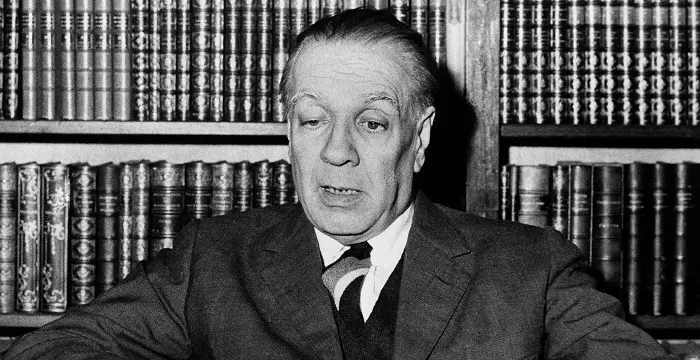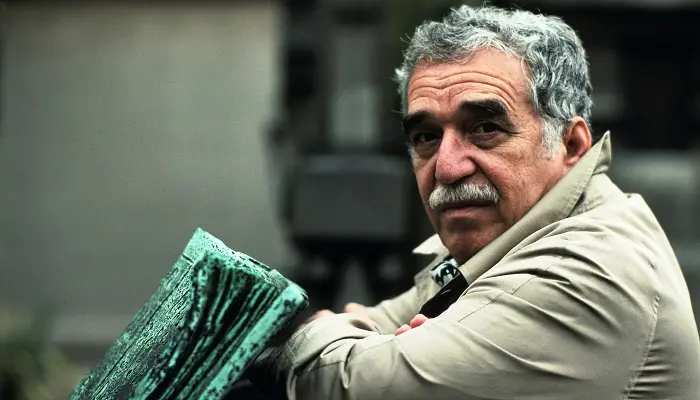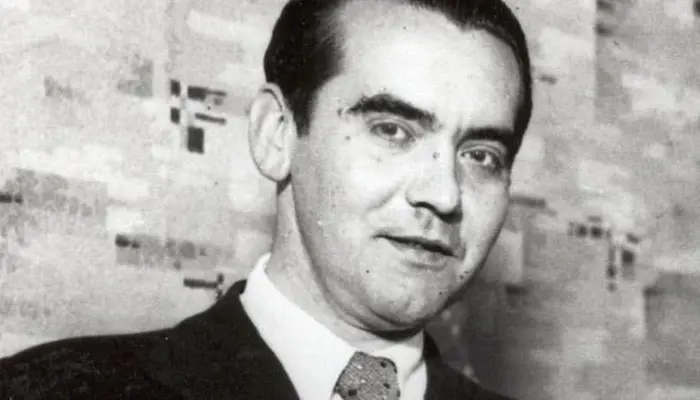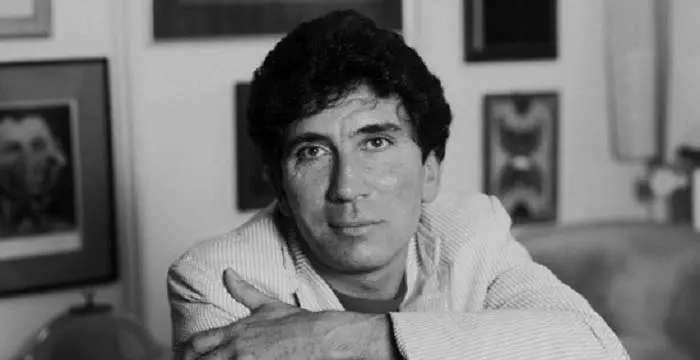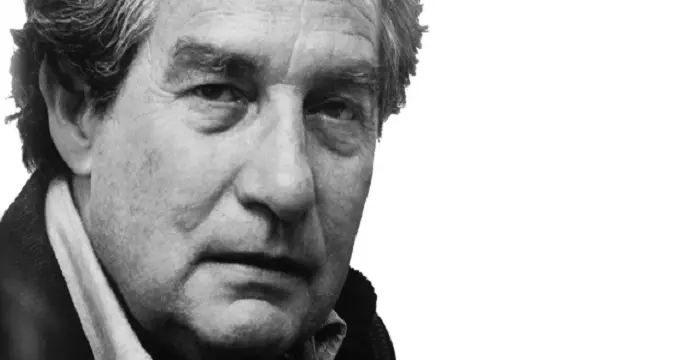
Octavio Paz - Diplomats, Family and Facts
Octavio Paz's Personal Details
Octavio Paz Lozano was a Nobel Prize winning Mexican poet, essayist and a diplomat
| Information | Detail |
|---|---|
| Birthday | March 31, 1914 |
| Died on | April 19, 1998 |
| Nationality | Mexican |
| Famous | Hispanic Authors, Nobel Laureates In Literature, Writers, Poets, Diplomats, Noble Prize Laureate |
| Spouses | Elena Garro (m. 1938–1959), Marie-José Tramini (m. 1963–1998) |
| Childrens | Helena |
| Universities |
|
| Founder / Co-Founder |
|
| Birth Place | Mexico City, Mexico |
| Political Ideology | Republican |
| Religion | Roman Catholic |
| Gender | Male |
| Father | Octavio Paz Solórzano |
| Mother | Josefina Lozano |
| Sun Sign | Aries |
| Born in | Mexico City, Mexico |
| Famous as | Writer, Poet, Diplomat and Noble Prize Laureate |
| Died at Age | 84 |
// Famous Diplomats
Stephen Lewis
Stephen Lewis is a Canadian politician, broadcaster, diplomat and professor. This biography profiles his childhood, career, works, life, achievements and timeline.
Madeleine Albright
Madeleine Albright is an American politician and a former United States Secretary of State and Ambassador to the United Nations. This biography provides detailed information about her childhood, life, career, achievements and timeline.
Ralph Bunche
Ralph Bunche was an American political scientist and diplomat who received the 1950 Nobel Peace Prize for his work in Palestine. Check out this biography to know about his childhood, family life, achievements and other facts related to his life.
Octavio Paz's photo
Who is Octavio Paz?
Octavio Paz Lozano was a Nobel Prize winning Mexican poet, essayist and a diplomat born in the middle of the Civil War that raged through the country in the early twentieth century. As his father was a member of a revolutionary group, young Octavio spent his early childhood under the care of his grandfather, also a noted writer. The elder Paz kept an extensive library and Octavio was introduced to both Mexican and European literature through these books while he was still a child. He began writing at the age of eight and had his first book of poems published at nineteen. Later he joined Mexican diplomatic service and it was during his stint as Ambassador to India that he had the opportunity to study Hindu and Buddhist philosophies which influenced his later writings. Although known as a leftist writer, Paz did not support Cuban leader Fidel Castro or the Sandinista guerrilla movement of Nicaragua. He later said, "Revolution begins as a promise, is squandered in violent agitation, and freezes into bloody dictatorships that are the negation of the fiery impulse that brought it into being."
// Famous Noble Prize Laureate
Frank Macfarlane Burnet
Sir Frank Macfarlane Burnet was an Australian virologist and immunologist, known for his contributions in human biology. This biography profiles childhood, life, career, achievements and timeline of this Nobel Laureate.
Childhood & Early Life
Octavio Paz Lozano was born on March 31, 1914, in Mexico City into a distinguished family of Spanish and Indian descent. His father, Octavio Paz Solórzano, was a prominent lawyer and journalist. He served as a counsel for Mexican revolutionary Emiliano Zapata and took decisive part in his 1911 agrarian uprising.
With his son away, it fell upon Octavio’s grandfather, Ireneo Paz, also a political activist and writer, to look after the family. In 1915, he took the mother and child to his house in Mixcoac; a pre-Hispanic town, located just outside the Mexican City, but now a part of it.
There, young Octavio was brought up by his mother, Josefina Lozano, aunt, Amalia Paz and grandfather. Their big magnificent house, the surrounding garden as well as the cobbled streets of the town left an everlasting impression on his mind and were later reflected in many of his works.
In 1919, after Zapata was killed, Octavio Paz Solórzano relocated to Los Angeles. The following year, he sent for his wife and child and so sometime in 1920, six-year-old Octavio and his mother set off for Los Angeles, where they lived for two years.
At Los Angeles, he was enrolled at a local kindergarten school. Not knowing even a single word of English, he could not communicate with anyone and felt like an outsider. Embarrassed, he took refuge in silence.
Young though he was, he did not miss the cultural difference between the two countries. This feeling would one day be reflected in his writings, especially in ‘El laberinto de la soledad’ (The Labyrinth of Solitude, 1950).
In around 1922, they returned to Mexico and started living with his grandfather and aunt in their house in Mixcoac. Once again, young Octavio found it hard to adjust and started feeling like an outsider.
This time, he took to writing, trying to give expression to his intense feelings both in verse and prose. The sudden death of his grandfather in 1924, also added impulse to his writing. He later wrote, “In death, I discovered language.”
In Mixcoac, Octavio was first enrolled at La Salle brothers’ primary school, located in the centre of the town. Later he was sent to study at Colegio Williams, also in Mixcoac, where he received English public style education.
By now, their financial condition had become so bad that they could not maintain their house. As the rooms became inhabitable one by one, they kept on abandoning them, moving the delicate furniture to other rooms.
However, Octavio still had access to the magnificent library his grandfather had left. There he came across the finest Mexican as well as English classics. Thus he discovered Gerardo Diego, Juan Ramón Jiménez, and Antonio Machado at an early age. Later they would have great influence on his writings.
His life, which was so far centered on the small city of Mixcoac, changed as he started attending ‘Preparatoria Nacional’ in around 1929. For two years, he traveled daily to the centre of the Mexican City, which exposed him to different viewpoints.
College Life
In 1932, Octavio Paz Lozano entered National Autonomous University of Mexico. Here he was drawn to the leftist movement. Along with his studies and political activism, he also concentrated on writing, publishing a number of poems in the same year.
One of the more well-known poems published around that time was ‘Cabellera.’ His first article, ‘Etica del artista’ (Ethics of the Artist), was also published in the same period.
However, his most noteworthy achievement of this period was the founding of an avant-garde literary magazine titled, ‘Barandal’ (handrail) with three friends, Rafael López Malo, Salvador Toscano and Arnulfo Martínez Lavalle.
Paz’s first book of poems ‘Luna silvestre’ (Wild Moon) was published in 1933. Subsequently, he had two more books published; ‘No pasarán!’ in 1936 and ‘Raíz del hombre’ in 1937.
Sometime during this period, he sent some of his works to well-known Chilean poet, Pablo Neruda. Neruda not only sent back favorable reviews, but also encouraged him to attend the meeting of leftist writers to be held later in Spain.
Attending Writersâ
Eventually Octavio Paz became so much involved with his political activism and writing that he could no longer continue with his studies. He abandoned his education and in March 1937, left for Mérida to become a schoolmaster. The school was set up for the children of poor peasants and workers.
Here, his job was not only to teach, but also to recruit pupils. While searching for them, he witnessed how the peasants were dominated by the landlords. What he saw here, inspired him to start on a long poem, later named ‘Entre la piedra y la flor.’
However, he did not continue there for long. Within three months, he left for Spain to attend the Second International Writers Congress in Defense of Culture in Spain at Valencia, never to come back to his teaching post in Mérida.
At that time, the Civil War was raging through the country and Paz identified strongly with the Republicans. What he saw there was reflected in his fourth book of poem, ‘Bajo tu clara sombra y otros poemas sobre España’, published in the same year in Spain. It established him as a promising writer.
In 1938, on his way back to Mexico, he stopped at Paris. Here, he met many surreal artists and was greatly influenced by both surrealism and its proponents.
Return to Mexico
In 1938, on his return to Mexico, Octavio Paz co-founded two literary journals, ‘Taller’ meaning workshop and ‘El Hijo Pródigo’, meaning the child prodigy. Concurrently, he resumed his work on ‘Entre la piedra y la flor’, the long poem he had started at Mérida and had it published in 1941.
In 1943, Paz won a two-year Guggenheim fellowship and used it to study Anglo American Modernist poetry at the University of California. During this period, he also travelled all over the United States of America.
As a Diplomat
In 1945, Octavio Paz Lozano entered into a new phase of his life. That year, he joined the Mexican diplomatic service and was first assigned to New York City and then to Paris.
Paz lived in Paris from 1946 to 1951. Here he met many well-known thinkers and writers like Jean-Paul Sartre, Andre Breton, Albert Camus, Benjamin Peret, etc. and together with them, participated in various activities as well as publications.
This period was very productive for him. Sometime now, he wrote ‘El laberinto de la soledad’ (The Labyrinth of Solitude). Published in 1950, it was a book-length essay dealing fundamentally with Mexican identity. It established him as a major literary figure.
In 1952, he travelled to India for the first time. Later in the same year, he joined the Mexican embassy at Tokyo as the chargé d'affaires and from there he was sent to Geneva, returning to Mexico City in 1954.
He lived in Mexico until 1957 and in the same year, published his great poem ‘Piedra de sol’ ("Sunstone"). After another stint in Paris, he was sent to India in 1962 as Mexico’s ambassador to that country.
He now took the opportunity to study Hindu and Buddhist philosophies. However, his interest was more intellectual than religious. During this period, he also came in close contact with the members of ‘Hungry Generation’, a group of avant-garde poets based in Kolkata and exerted considerable influence on them.
On October 2, 1968, back in Mexico, an estimated 300 students and civilians were killed by Mexican military and police in the Plaza de las Tres Culturas in the Tlatelolco section of Mexico City. Hearing this, Paz resigned from his post in protest.
While in India, he also wrote vast numbers of poems. Two of his most important works of this period are ‘Ladera este’ (Eastern Slope, published in 1969) and ‘El mono gramático’ (The Monkey Grammarian, published in 1974).
Later Years
After leaving India, Paz spent some time in Paris and returned to Mexico in 1969. In the same year, he was appointed to the Simon Bolivar Chair at Cambridge University where he taught from 1969 to 1970. Thereafter, from 1970 to 1974 he held the Charles Eliot Norton professorship at Harvard University.
Also in 1970, he cofounded ‘Plural’, a literary magazine, with a group of liberal Mexican and Latin American writers. When in 1975, the Mexican government banned ‘Plural’, he founded another cultural magazine called ‘Vuelta’, remaining its editor till his death.
Major Works
’Piedra de Sol’ (Sunstone), published in 1957, is one among Paz’s highly appreciated poems. The work is based on circular Aztec calendar and has 584 lines corresponding to its 584 days. It was later translated into English by Eliot Weinberger and published in 1987 as part of ‘The Collected Poems of Octavio Paz, 1957–1987.’
Among his essays, he is best remembered for ‘El laberinto de la soledad’ (The Labyrinth of Solitude). The work, divided into nine parts, deals primarily with Mexican identity. It also demonstrates how at the end of a labyrinth, there exists an intense feeling of solitude.
Awards & Achievements
In 1990, Octavio Paz Lozano received the Nobel Prize in Literature "for impassioned writing with wide horizons, characterized by sensuous intelligence and humanistic integrity."
Apart from that, he was honored with many other awards, the most significant among them being Jerusalem Prize (1977), Miguel de Cervantes Prize (1981) and Neustadt Internal Prize for Literature (1982).
In 1980, he was awarded an honorary doctorate from Harvard University.
Personal Life & Legacy
In 1937, Octavio Paz married Elena Garro, also a Mexican writer of great repute. The couple had a daughter named Helena Laura Paz Garro. Their marriage broke up in 1959. However, Elena always claimed that they were not officially divorced and if any such paper existed, it was fraudulent.
In 1965, he married Marie-José Tramini, a French lady, with whom he lived until his death.
Towards the end of his life, he was inflicted with cancer and died from it on April 19, 1998, in Mexico City. The body of work he left behind continues to keep his legacy alive.
// Famous Poets
Charles Bukowski
Charles Bukowski was a German-born American novelist, short story writer and poet. With this biography, learn in details about his childhood, life, works, career and timeline
Seamus Heaney
Nobel Laureate Seamus Heaney was an Irish poet, playwright and translator. Know about his profile, childhood, life and timeline in the biography below.
Walt Whitman
Walt Whitman was an American poet, journalist and humanist. Read this brief biography to find more on his life & timeline.
Octavio Paz's awards
| Year | Name | Award |
|---|---|---|
Other | ||
| 0 | National Prize. | |
| 0 | Alfonso Reyes Prize | |
| 0 | Neustadt International Prize | |
| 0 | Jerusalem Prize | |
| 0 | Menendez y Pelayo Prize | |
| 0 | Alexis de Tocqueville Prize | |
| 0 | Xavier Villaurrutia Award. | |
| 0 | Nobel Prize in Literature | |
| 0 | Peace Prize of the German Book Trade | |
| 0 | Miguel de Cervantes Prize | |
Octavio Paz biography timelines
- // 31st Mar 1914Octavio Paz Lozano was born on March 31, 1914, in Mexico City into a distinguished family of Spanish and Indian descent. His father, Octavio Paz Solórzano, was a prominent lawyer and journalist. He served as a counsel for Mexican revolutionary Emiliano Zapata and took decisive part in his 1911 agrarian uprising.
- // 1915With his son away, it fell upon Octavio’s grandfather, Ireneo Paz, also a political activist and writer, to look after the family. In 1915, he took the mother and child to his house in Mixcoac; a pre-Hispanic town, located just outside the Mexican City, but now a part of it.
- // 1919 To 1920In 1919, after Zapata was killed, Octavio Paz Solórzano relocated to Los Angeles. The following year, he sent for his wife and child and so sometime in 1920, six-year-old Octavio and his mother set off for Los Angeles, where they lived for two years.
- // 1922In around 1922, they returned to Mexico and started living with his grandfather and aunt in their house in Mixcoac. Once again, young Octavio found it hard to adjust and started feeling like an outsider.
- // 1924This time, he took to writing, trying to give expression to his intense feelings both in verse and prose. The sudden death of his grandfather in 1924, also added impulse to his writing. He later wrote, “In death, I discovered language.”
- // 1929His life, which was so far centered on the small city of Mixcoac, changed as he started attending ‘Preparatoria Nacional’ in around 1929. For two years, he traveled daily to the centre of the Mexican City, which exposed him to different viewpoints.
- // 1932In 1932, Octavio Paz Lozano entered National Autonomous University of Mexico. Here he was drawn to the leftist movement. Along with his studies and political activism, he also concentrated on writing, publishing a number of poems in the same year.
- // 1933 To 1937Paz’s first book of poems ‘Luna silvestre’ (Wild Moon) was published in 1933. Subsequently, he had two more books published; ‘No pasarán!’ in 1936 and ‘Raíz del hombre’ in 1937.
- // 1936 To 1959In 1937, Octavio Paz married Elena Garro, also a Mexican writer of great repute. The couple had a daughter named Helena Laura Paz Garro. Their marriage broke up in 1959. However, Elena always claimed that they were not officially divorced and if any such paper existed, it was fraudulent.
- // 1937Eventually Octavio Paz became so much involved with his political activism and writing that he could no longer continue with his studies. He abandoned his education and in March 1937, left for Mérida to become a schoolmaster. The school was set up for the children of poor peasants and workers.
- // 1938In 1938, on his way back to Mexico, he stopped at Paris. Here, he met many surreal artists and was greatly influenced by both surrealism and its proponents.
- // 1938 To 1941In 1938, on his return to Mexico, Octavio Paz co-founded two literary journals, ‘Taller’ meaning workshop and ‘El Hijo Pródigo’, meaning the child prodigy. Concurrently, he resumed his work on ‘Entre la piedra y la flor’, the long poem he had started at Mérida and had it published in 1941.
- // 1943In 1943, Paz won a two-year Guggenheim fellowship and used it to study Anglo American Modernist poetry at the University of California. During this period, he also travelled all over the United States of America.
- // 1945In 1945, Octavio Paz Lozano entered into a new phase of his life. That year, he joined the Mexican diplomatic service and was first assigned to New York City and then to Paris.
- // 1946 To 1951Paz lived in Paris from 1946 to 1951. Here he met many well-known thinkers and writers like Jean-Paul Sartre, Andre Breton, Albert Camus, Benjamin Peret, etc. and together with them, participated in various activities as well as publications.
- // 1950Young though he was, he did not miss the cultural difference between the two countries. This feeling would one day be reflected in his writings, especially in ‘El laberinto de la soledad’ (The Labyrinth of Solitude, 1950).
- // 1950This period was very productive for him. Sometime now, he wrote ‘El laberinto de la soledad’ (The Labyrinth of Solitude). Published in 1950, it was a book-length essay dealing fundamentally with Mexican identity. It established him as a major literary figure.
- // 1952 To 1954In 1952, he travelled to India for the first time. Later in the same year, he joined the Mexican embassy at Tokyo as the chargé d'affaires and from there he was sent to Geneva, returning to Mexico City in 1954.
- // 1957 To 1962He lived in Mexico until 1957 and in the same year, published his great poem ‘Piedra de sol’ ("Sunstone"). After another stint in Paris, he was sent to India in 1962 as Mexico’s ambassador to that country.
- // 1957 To 1987’Piedra de Sol’ (Sunstone), published in 1957, is one among Paz’s highly appreciated poems. The work is based on circular Aztec calendar and has 584 lines corresponding to its 584 days. It was later translated into English by Eliot Weinberger and published in 1987 as part of ‘The Collected Poems of Octavio Paz, 1957–1987.’
- // 1965In 1965, he married Marie-José Tramini, a French lady, with whom he lived until his death.
- // 2nd Oct 1968On October 2, 1968, back in Mexico, an estimated 300 students and civilians were killed by Mexican military and police in the Plaza de las Tres Culturas in the Tlatelolco section of Mexico City. Hearing this, Paz resigned from his post in protest.
- // 1969 To 1974While in India, he also wrote vast numbers of poems. Two of his most important works of this period are ‘Ladera este’ (Eastern Slope, published in 1969) and ‘El mono gramático’ (The Monkey Grammarian, published in 1974).
- // 1969 To 1974After leaving India, Paz spent some time in Paris and returned to Mexico in 1969. In the same year, he was appointed to the Simon Bolivar Chair at Cambridge University where he taught from 1969 to 1970. Thereafter, from 1970 to 1974 he held the Charles Eliot Norton professorship at Harvard University.
- // 1970Also in 1970, he cofounded ‘Plural’, a literary magazine, with a group of liberal Mexican and Latin American writers. When in 1975, the Mexican government banned ‘Plural’, he founded another cultural magazine called ‘Vuelta’, remaining its editor till his death.
- // 1977 To 1982Apart from that, he was honored with many other awards, the most significant among them being Jerusalem Prize (1977), Miguel de Cervantes Prize (1981) and Neustadt Internal Prize for Literature (1982).
- // 1980In 1980, he was awarded an honorary doctorate from Harvard University.
- // 1990In 1990, Octavio Paz Lozano received the Nobel Prize in Literature "for impassioned writing with wide horizons, characterized by sensuous intelligence and humanistic integrity."
- // 19th Apr 1998Towards the end of his life, he was inflicted with cancer and died from it on April 19, 1998, in Mexico City. The body of work he left behind continues to keep his legacy alive.
// Famous Hispanic Authors
Sandra Cisneros
Sandra Cisneros is an American writer known for audaciously penning the realities and expectations from females in US and Mexico. This biography provides detailed information about her childhood, life, achievements, works & timeline
Isabel Allende
The prolific writer is the author of award winning books such as 'Eva Luna' and ‘The House of Spirits'. To know more about the childhood, career, profile and timeline of Isabel Allende read on the following biography.
Jorge Luis Borges
Jorge Luis Borges was a famous Argentine poet, best known for his magical realism style of writing. To know more about him and his childhood, read on his brief biography in the lines below.
Gabriel Garcia Marquez
Gabriel Garcia Marquez was a Colombian novelist counted among the greatest writers of the 20th century. This biography of Gabriel Garcia Marquez provides detailed information about his childhood, life, achievements, works & timeline.
Federico García Lorca
Federico García Lorca was a famous Spanish poet who had written the popular 'Romancero Gitano'. This biography provides detailed information about his childhood, profile, career and timeline
Reinaldo Arenas
Reinaldo Arenas was a Cuban writer and poet who rebelled against Fidel Castro’s Cuban government and fled to the US. Read this biography to learn more about his childhood, work, achievements, life and timeline.
Octavio Paz's FAQ
What is Octavio Paz birthday?
Octavio Paz was born at 1914-03-31
When was Octavio Paz died?
Octavio Paz was died at 1998-04-19
Where was Octavio Paz died?
Octavio Paz was died in Mexico City, Mexico
Which age was Octavio Paz died?
Octavio Paz was died at age 84
Where is Octavio Paz's birth place?
Octavio Paz was born in Mexico City, Mexico
What is Octavio Paz nationalities?
Octavio Paz's nationalities is Mexican
Who is Octavio Paz spouses?
Octavio Paz's spouses is Elena Garro (m. 1938–1959), Marie-José Tramini (m. 1963–1998)
Who is Octavio Paz childrens?
Octavio Paz's childrens is Helena
What was Octavio Paz universities?
Octavio Paz studied at National Autonomous University of Mexico, University of California, Berkeley, Colegio Williams
Which company or organization was founded by Octavio Paz?
Octavio Paz was the founder/co-founder of Vuelta, Taller (
What is Octavio Paz's political ideology?
Octavio Paz's political ideology is Republican
What is Octavio Paz's religion?
Octavio Paz's religion is Roman Catholic
Who is Octavio Paz's father?
Octavio Paz's father is Octavio Paz Solórzano
Who is Octavio Paz's mother?
Octavio Paz's mother is Josefina Lozano
What is Octavio Paz's sun sign?
Octavio Paz is Aries
How famous is Octavio Paz?
Octavio Paz is famouse as Writer, Poet, Diplomat and Noble Prize Laureate

